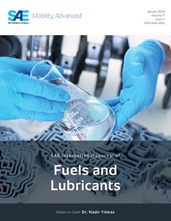Market demand for high performance gasoline vehicles and increasingly strict government emissions regulations are driving the development of highly downsized, boosted direct injection engines. The in-cylinder temperatures and pressures of these emerging technologies tend to no longer adhere to the test conditions defining the RON and MON octane rating scales. This divergence between fuel knock rating methods and fuel performance in modern engines has previously led to the development of an engine and operating condition dependent scaling factor, K, which allows for extrapolation of RON and MON values. Downsized, boosted DISI engines have been generally shown to have negative K-values when knock limited, indicating a preference for fuels of higher sensitivity and challenging the relevance of a lower limit to the MON specification.
The Ultraboost engine is an inline-4 downsized, highly boosted prototype DISI engine designed to achieve a 35% reduction in CO2 emissions whilst maintaining performance of a production V8. A series of 14 fuel formulations were tested to probe engine response to various fuel properties. This paper presents results from a 7 fuel RON and MON decorrelated matrix at four high-load engine conditions. The K-value was found to be negative at all engine conditions; fuels of higher sensitivity were found to yield improved engine performance. Furthermore, in-cylinder experimental data from high load knocking conditions with a single standard octane fuel were used to simulate the K-value; a similar trend between theory and experiment was observed.
